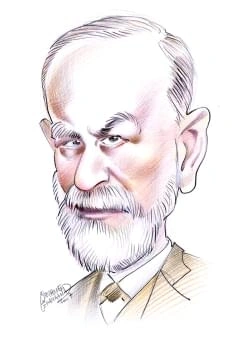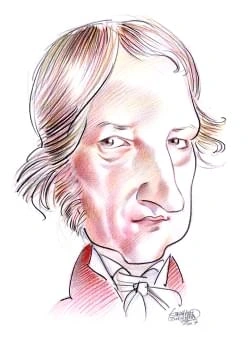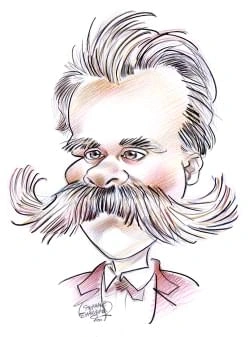295 résultats pour "level"
-
Human Evolution.
Strepsirhines are the most primitive types of living primates. The last common ancestors of strepsirhines and other mammals—creatures similar to tree shrews andclassified as Plesiadapiformes—evolved at least 65 million years ago. The earliest primates evolved by about 55 million years ago, and fossil species similar to lemursevolved during the Eocene Epoch (about 55 million to 38 million years ago). Strepsirhines share all of the basic characteristics of primates, although their brains are notpa...
-
Human Evolution - biology.
classified as Plesiadapiformes—evolved at least 65 million years ago. The earliest primates evolved by about 55 million years ago, and fossil species similar to lemursevolved during the Eocene Epoch (about 55 million to 38 million years ago). Strepsirhines share all of the basic characteristics of primates, although their brains are notparticularly large or complex and they have a more elaborate and sensitive olfactory system (sense of smell) than do other primates. B Haplorhines B1 Tarsiers T...
-
Evolution - biology.
genetic diversity to extinction. Sexual reproduction ensures that the genes in a population are rearranged in each generation, a process termed recombination. Although the combinations of genes inindividuals change with each new generation, the gene frequency, or ratio of different alleles in the entire population, remains relatively constant if no evolutionaryforces act on the population. One such force is the introduction of new genes into the genetic material of the population, or gene pool...
-
Intelligence.
education. Teachers had no way of knowing which of the “slow” students had true learning problems and which simply had behavioral problems or poor prior education.In 1904 the French Ministry of Public Instruction asked Binet and others to develop a method to objectively identify children who would have difficulty with formaleducation. Objectivity was important so that conclusions about a child’s potential for learning would not be influenced by any biases of the examiner. The governmenthoped tha...
-
Spain - country.
B Natural Resources Spain has a number of mineral resources. The largest known deposits are of iron ore, zinc, and lead. Spain also produces significant quantities of copper and mercury.These deposits are mined mainly in Huelva province in southwestern Spain, around Cartagena on the Mediterranean, and at various points along the Bay of Biscay inthe north. Additionally, uranium is mined in the region of Extremadura, near the Portuguese frontier, where pyrites, fluorspar, gypsum, tungsten, and po...
-
Asia - Geography.
Borneo, the world’s third largest island after Greenland and New Guinea. To the southeast is the Timor Sea separating the Asian island of Timor from the Australiancontinent. The Indian subcontinent is flanked by the Bay of Bengal on the east and the Arabian Sea on the west. The island of Sri Lanka and the much smaller Maldives andNicobar Islands trail away to the south. The Arabian Sea’s Gulf of Aden, the Red Sea, the Mediterranean Sea, and the Black Sea form an arc along the western rim of Asia...
-
Asia - History.
Borneo, the world’s third largest island after Greenland and New Guinea. To the southeast is the Timor Sea separating the Asian island of Timor from the Australiancontinent. The Indian subcontinent is flanked by the Bay of Bengal on the east and the Arabian Sea on the west. The island of Sri Lanka and the much smaller Maldives andNicobar Islands trail away to the south. The Arabian Sea’s Gulf of Aden, the Red Sea, the Mediterranean Sea, and the Black Sea form an arc along the western rim of Asia...
-
Ocean and Oceanography.
of sediment. When studied in sedimentary core samples, which can represent many millions of years of deposits, they provide a detailed and continuous history of theearth’s environmental changes. The record is particularly informative for the most recent 2 million to 5 million years, during which major fluctuations in global climatehave occurred. Successive ice ages can be traced by the relative scarcity or abundance of the shells of warm-water and cold-water diatoms in various layers of asedimen...
-
-
Ocean and Oceanography - Geography.
of sediment. When studied in sedimentary core samples, which can represent many millions of years of deposits, they provide a detailed and continuous history of theearth’s environmental changes. The record is particularly informative for the most recent 2 million to 5 million years, during which major fluctuations in global climatehave occurred. Successive ice ages can be traced by the relative scarcity or abundance of the shells of warm-water and cold-water diatoms in various layers of asedimen...
-
Canada.
Six general landform regions are distinguishable in Canada: the Appalachian Region, the Great Lakes and St. Lawrence Lowlands, the Canadian Shield, the Great Plains,the Canadian Cordillera, and the Canadian Arctic Archipelago. B1 Appalachian Region and Great Lakes and St. Lawrence Lowlands Eastern Canada consists of the Appalachian Region and the Great Lakes and St. Lawrence Lowlands. The Appalachian Region embraces Newfoundland Island, NovaScotia, New Brunswick, Prince Edward Island, and the G...
-
Canada - country.
Six general landform regions are distinguishable in Canada: the Appalachian Region, the Great Lakes and St. Lawrence Lowlands, the Canadian Shield, the Great Plains,the Canadian Cordillera, and the Canadian Arctic Archipelago. B1 Appalachian Region and Great Lakes and St. Lawrence Lowlands Eastern Canada consists of the Appalachian Region and the Great Lakes and St. Lawrence Lowlands. The Appalachian Region embraces Newfoundland Island, NovaScotia, New Brunswick, Prince Edward Island, and the G...
-
Canada - Canadian History.
Six general landform regions are distinguishable in Canada: the Appalachian Region, the Great Lakes and St. Lawrence Lowlands, the Canadian Shield, the Great Plains,the Canadian Cordillera, and the Canadian Arctic Archipelago. B1 Appalachian Region and Great Lakes and St. Lawrence Lowlands Eastern Canada consists of the Appalachian Region and the Great Lakes and St. Lawrence Lowlands. The Appalachian Region embraces Newfoundland Island, NovaScotia, New Brunswick, Prince Edward Island, and the G...
-
Antarctica - Geography.
The maximum area of sea ice surrounding Antarctica each winter varies from year to year. A marked decline during the 1970s appears to have reversed in more recentdecades, except in the Antarctic Peninsula area. This area has lost almost 40 percent of its sea ice since the start of the 1980s. Sea ice is important to marine life. Krillfeed on algae that live under the sea ice and are released when the ice melts in spring and summer. In turn, many marine animals feed on krill. Emperor penguinsbreed...
-
Communism.
In Britain, Robert Owen, a philanthropic Welsh manufacturer, strove against the social problems brought about by the Industrial Revolution and sought to improve thewelfare of workers. As manager of a cotton mill, he enhanced the environment of his workers by improving their housing, modernizing mill equipment for greater safetyand sanitation, and establishing low-priced stores for the workers and schools for their children. Owen believed that workers, rather than governments, should createthe in...
-
Communism .
In Britain, Robert Owen, a philanthropic Welsh manufacturer, strove against the social problems brought about by the Industrial Revolution and sought to improve thewelfare of workers. As manager of a cotton mill, he enhanced the environment of his workers by improving their housing, modernizing mill equipment for greater safetyand sanitation, and establishing low-priced stores for the workers and schools for their children. Owen believed that workers, rather than governments, should createthe in...
-
Florida - USA History.
accidentally introduced into the region in the 1880s, and it spread with alarming rapidity throughout the upper reaches of the river. The plant is very difficult toeradicate, and it has also clogged the channels of other Florida rivers. To increase drainage of the Everglades, which drain naturally to Florida Bay and the Gulf ofMexico, a number of drainage channels and canals have been built across southern Florida. Among the rivers flowing from the peninsula to the Gulf of Mexico are the Suwanne...
-
-
Water Pollution.
Cryptosporidium in the water supply of Milwaukee, Wisconsin, sickened more than 400,000 people and killed more than 100. H Thermal Pollution Water is often drawn from rivers, lakes, or the ocean for use as a coolant in factories and power plants. The water is usually returned to the source warmer than when itwas taken. Even small temperature changes in a body of water can drive away the fish and other species that were originally present, and attract other species in placeof them. Thermal pol...
-
Louisiana - geography.
lakes are on the Red River and its tributaries. In addition, small oxbow lakes are numerous in the Mississippi Alluvial Plain. Oxbow lakes are formed when a river cutsthrough the neck of one of its loops, or meanders, thus establishing a shorter course and leaving the former loop as a lake separate from the river. Louisiana also hassome artificially created reservoirs. C Coastline Louisiana’s long and irregular coastline extends along the Gulf of Mexico from the Pearl River on the east to the S...
-
Louisiana - USA History.
lakes are on the Red River and its tributaries. In addition, small oxbow lakes are numerous in the Mississippi Alluvial Plain. Oxbow lakes are formed when a river cutsthrough the neck of one of its loops, or meanders, thus establishing a shorter course and leaving the former loop as a lake separate from the river. Louisiana also hassome artificially created reservoirs. C Coastline Louisiana’s long and irregular coastline extends along the Gulf of Mexico from the Pearl River on the east to the S...
-
Afghanistan - country.
D Climate Most of Afghanistan has a subarctic mountain climate with dry and cold winters, except for the lowlands, which have arid and semiarid climates. In the mountains and afew of the valleys bordering Pakistan, a fringe effect of the Indian monsoon, coming usually from the southeast, brings moist maritime tropical air in summer.Afghanistan has clearly defined seasons: Summers are hot and winters can be bitterly cold. Summer temperatures as high as 49°C (120°F) have been recorded in thenorth...
-
Weather.
hours, and the snow can be much deeper in places where the wind piles it up in drifts. Extraordinarily deep snows sometimes accumulate on the upwind side ofmountain slopes during severe winter storms or on the downwind shores of large lakes during outbreaks of polar air. VI WIND Wind is the horizontal movement of air. It is named for the direction from which it comes—for example, a north wind comes from the north. In most places near theground, the wind speed averages from 8 to 24 km/h (from 5...
-
Brazil - country.
occasional droughts. Brazil contains a wealth of mineral and plant resources that have not yet been fully explored. It possesses some of the world’s largest deposits of iron ore and containsrich deposits of many other minerals, including gold and copper. Brazil’s fossil fuel resources are modest, but this limitation is offset by the considerable hydroelectricpotential of the nation’s many rivers. Although Brazil is an important producer of tropical crops, areas of highly fertile land are limited...
-
Saskatchewan (province) - Geography.
The length of the frost-free season varies within the province. In the southwest, particularly in the valley lands along the South Saskatchewan River, the frost-freeperiod ranges from 150 to 160 days. Regina enjoys about 123 frost-free days, and Saskatoon has about 111. The far north has only from 85 to 95 frost-free days. One important characteristic of Saskatchewan’s climate is the great variability in temperature and precipitation from year to year, which is often critical for agriculture.The...
-
Saskatchewan (province) - Canadian History.
The length of the frost-free season varies within the province. In the southwest, particularly in the valley lands along the South Saskatchewan River, the frost-freeperiod ranges from 150 to 160 days. Regina enjoys about 123 frost-free days, and Saskatoon has about 111. The far north has only from 85 to 95 frost-free days. One important characteristic of Saskatchewan’s climate is the great variability in temperature and precipitation from year to year, which is often critical for agriculture.The...
-
-
Israel (country) - country.
harbor in the northern part of the country, and Ashdod, an artificial deepwater port to the south, serve as the main seaports on the Mediterranean. The port of Elat onthe Gulf of Aqaba provides Israel’s only access to the Red Sea, making it extremely important to the country’s shipping interests. D Natural Resources Although much of Israel’s desert regions contain poor soils, the northern Negev, the coastal plains, and the interior valleys provide patches of productive soils. Anestimated 18 per...
-
House (architecture)
I
INTRODUCTION
Trulli in Alberobello, Italy
Alberobello, in the Apulia region of southeastern Italy, is noted for its unusual limestone houses known as trulli (from
Greek trullos, dome).
Fresco in the Villa of the Mysteries, PompeiiThe Villa of the Mysteries, Pompeii, Italy (built about 50 bc), featured a large hall with this mural encircling it. The mural ispainted in the Second Style of Roman painting. (Historians of art recognize four periods or styles in Roman wall painting.)The mural in the Villa of the Mysteries is thought to depict the initiation rituals of a mystery religion. For this reason, it hasbeen conjectured that the hall was used for cult rituals.Bridgeman Art Li...
-
Population.
year AD 1, and it took more than 1,500 years to reach the 500 million mark. Growth was not steady but was marked by oscillations dictated by climate, food supply, disease, and war. Starting in the 17th century, great advances in scientific knowledge, agriculture, industry, medicine, and social organization made possible rapid acceleration inpopulation growth. Machines gradually replaced human and animal labor. People slowly acquired the knowledge and means to control disease. By 1900 the worldp...
-
Public Education in the United States.
opportunities for them to break out from whatever social or economic circumstances constrained their development. IV HIGHER EDUCATION During the 20th century participation in higher or postsecondary education in the United States increased as dramatically as it did in American high schools. At thebeginning of the century about 2 percent of Americans from the ages of 18 to 24 were enrolled in a college. There were fewer than 1,000 colleges then, with enrollmenttotaling about 157,000 students. N...
-
Oklahoma - geography.
portion and the Panhandle are classified as a steppe, where precipitation, typically 250 to 500 mm (10 to 20 in), is the controlling characteristic. January is usually the coldest month with an average of about 3°C (38°F) and extremes from -33°C (-27°F), the lowest ever recorded, to 33°C (92°F). Summer arelong and hot with temperatures in the upper 30°s C (lower 100°s F) common from May until September across the state. The growing season varies from less than 180days in the western Panhandle to...
-
Oklahoma - USA History.
portion and the Panhandle are classified as a steppe, where precipitation, typically 250 to 500 mm (10 to 20 in), is the controlling characteristic. January is usually the coldest month with an average of about 3°C (38°F) and extremes from -33°C (-27°F), the lowest ever recorded, to 33°C (92°F). Summer arelong and hot with temperatures in the upper 30°s C (lower 100°s F) common from May until September across the state. The growing season varies from less than 180days in the western Panhandle to...
-
Race - biology.
distributed as a cline, generally varying along a north-south line. Skin color is lightest in northern Europeans, especially in those who live around the Baltic Sea, andbecomes gradually darker as one moves toward southern Europe, the Mediterranean, the Middle East, and into northern Africa and northern subtropical Africa. Skin isdarkest in people who live in the tropical regions of Africa. The lack of clear-cut discontinuities makes any racial boundary based on skin color totally arbitrary. Sim...
-
Georgia (state) - geography.
B Rivers and Lakes Most of the rivers of Georgia drain eastward to the Atlantic Ocean proper or southward to the Gulf of Mexico. Only a few flow northward to the Tennessee River, which isa major tributary of the Mississippi River. Most of the rivers flowing to the coasts are navigable by barges and small craft as far upstream as the Fall Line. The major river flowing to the Atlantic is the Savannah River, which, with the Tugaloo River, one of its headwaters, forms most of the state’s eastern bo...
-
-
Georgia (state) - USA History.
B Rivers and Lakes Most of the rivers of Georgia drain eastward to the Atlantic Ocean proper or southward to the Gulf of Mexico. Only a few flow northward to the Tennessee River, which isa major tributary of the Mississippi River. Most of the rivers flowing to the coasts are navigable by barges and small craft as far upstream as the Fall Line. The major river flowing to the Atlantic is the Savannah River, which, with the Tugaloo River, one of its headwaters, forms most of the state’s eastern bo...
-
Iran - country.
Zagros mountains. In the more arid central part of the country, wild pistachio and other drought-resistant trees grow in areas that have not been disturbed by humanactivity. Tamarisk and other salt-tolerant bushes grow along the margins of the Dasht-e Kavir. A wide variety of native mammals, reptiles, birds, and insects inhabit Iran. Many species of mammals—including wolves, foxes, bears, mountain goats, red mountainsheep, rabbits, and gerbils—continue to thrive. Others—including Caspian tigers,...
-
Extinction (biology) - biology.
III ROLE OF MASS EXTINCTION IN EVOLUTION Historically biologists—most famous among them British naturalist Charles Darwin—assumed that extinction is the natural outcome of competition between newlyevolved, adaptively superior species and their older, more primitive ancestors. These scientists believed that newer, more highly evolved species simply drove less well-adapted species to extinction. That is, historically, extinction was thought to result from evolution. It was also thought that this...
-
Panama Canal - Geography.
The size of ships using the Panama Canal has steadily increased. About 27 percent of the vessels that use the canal are built to the maximum dimensions that can passthrough it (a category called “Panamax”). This has prompted further widening of Gaillard Cut, so that the larger Panamax vessels may transit safely. However, some ofthe world’s commercial and military ships are too large for the canal. Since the 1940s, new U.S. battleships and aircraft carriers have been built exceeding the canal’sdi...
-
Pollution.
One of the greatest challenges caused by air pollution is global warming, an increase in Earth’s temperature due to the buildup of certain atmospheric gases such ascarbon dioxide. With the heavy use of fossil fuels in the 20th century, atmospheric concentrations of carbon dioxide have risen dramatically. Carbon dioxide and othergases, known as greenhouse gases, reduce the escape of heat from the planet without blocking radiation coming from the Sun. Because of this greenhouse effect,average glob...
-
Moon - astronomy.
B Volcanic Features Maria, domes, rilles, and a few craters display indisputable characteristics of volcanic origin. Maria are plains of dark-colored rock that cover approximately 40 percent ofthe Moon's visible hemisphere. The maria formed when molten rock erupted onto the surface and solidified between 3.16 billion and 3.96 billion years ago. This rockresembles terrestrial basalt, a volcanic rock type widely distributed on Earth, but the rock that formed the maria has a higher iron content an...
-
Mexico City - geography.
The park houses some of Mexico's most important public buildings, including Chapultepec Castle. Construction of the castle began in 1783. Positioned on the park’shighest elevation, the castle functioned as a fortress during colonial times. It once served as the presidential residence and now houses the National Museum of History,which includes murals by 20th-century Mexican painter Juan O'Gorman. Los Pinos, the official residence and working offices of the president, is also on the grounds, buti...
-
Football.
C Special Teams Each team has players who enter the game during special plays such as kickoffs, field goals, punts, and returns. The kicker kicks off at the beginning of a game or half,and after his team has scored. The kicker also scores points for the offensive team by kicking the ball through the goalpost’s vertical posts, also known as the uprights;these scores are called field goals. When the offensive team must surrender the ball to the opponents, a punter comes in to kick the ball downfi...
-
-
Ukraine - country.
a major hazard, especially to Ukraine’s water supply. The Chernobyl’ complex was finally shut down completely in December 2000, with the financial assistance ofWestern nations. The funds were to pay for the completion of two other nuclear power plants that would produce enough power to make up for the loss of the powersupply from the Chernobyl’ plant. III PEOPLE OF UKRAINE The population of Ukraine was estimated in 2008 at 45,994,287, giving the country a population density of 76 persons per s...
-
Rhode Island - geography.
C (73° F). Along the northern state line, the January mean temperature is about 1° C (about 2° F) colder than in Warwick in January. Along the ocean coast, theJanuary mean temperature is -1° C (30° F). Warm season temperatures are also influenced by the ocean and bay, so temperatures are usually cooler along the coastthan in the interior. The difference tends to be greatest in spring and early summer. Winter temperatures in Rhode Island are usually above -7° C (20° F), buttemperatures colder by...
-
Rhode Island - USA History.
C (73° F). Along the northern state line, the January mean temperature is about 1° C (about 2° F) colder than in Warwick in January. Along the ocean coast, theJanuary mean temperature is -1° C (30° F). Warm season temperatures are also influenced by the ocean and bay, so temperatures are usually cooler along the coastthan in the interior. The difference tends to be greatest in spring and early summer. Winter temperatures in Rhode Island are usually above -7° C (20° F), buttemperatures colder by...
-
Switzerland - country.
formation over higher elevations. The wind reverses direction about sundown and moves down the valley as a cool downdraft. The foehn, which occurs during the wintermonths, is a dry and relatively warm airflow that is drawn northward over the Alps. The foehn can quickly melt snow and ice, increasing the risk of mudslides andavalanches. D Natural Resources Waterpower is the chief natural resource of Switzerland. The principal source of water is runoff from the considerable annual precipitation th...
-
Badminton.
Once play has started, players tend to hit straight, low-flying shots called drives. When the shuttle remains close to the center of the court, net shots can be a goodoption. Net shots can be hard-hit or delicate. They are aimed at the front area of the opponent’s court, forcing the opponent to play the shot close to the net. If the opponent manages to return a net shot, the return must be hit high to clear the net. This gives the player a chance for a smash—the deadliest attacking stroke inbadm...
-
Great Depression in the United States - U.
prices would continue to rise and they could soon sell their stocks at a profit. The widespread belief that anyone could get rich led many less affluent Americans into the market as well. Investors bought millions of shares of stock “on margin,” arisky practice similar to buying products on credit. They paid only a small part of the price and borrowed the rest, gambling that they could sell the stock at a highenough price to repay the loan and make a profit. For a time this was true: In 1928 the...
-
Mental Illness.
note that under this definition, political dissidents could be considered mentally ill for refusing to accept the dictates of their government. VI PREVALENCE Mental illness affects people of all ages, races, cultures, and socioeconomic classes. The prevalence of mental illness refers to how many people experience a mentalillness during a specified time period. A United States and Worldwide In the United States, researchers estimate that about 24 percent of people 18 or older, or about 44 mill...
-
Arkansas - geography.
temperature rises to the upper 30°s C (lower 100°s F). C2 Precipitation Arkansas receives about 1,000 to 1,300 mm (about 40 to 50 in) of precipitation a year, and some areas receive even more. Most of the rain comes during winter andspring and at times is so heavy as to cause flooding. Snow is rare in the south but amounts to more than 250 mm (10 in) a year in the mountains. C3 Growing Season Arkansas has a long growing season. It averages 211 days for the state as a whole and ranges from 241...
-
-
Arkansas - USA History.
temperature rises to the upper 30°s C (lower 100°s F). C2 Precipitation Arkansas receives about 1,000 to 1,300 mm (about 40 to 50 in) of precipitation a year, and some areas receive even more. Most of the rain comes during winter andspring and at times is so heavy as to cause flooding. Snow is rare in the south but amounts to more than 250 mm (10 in) a year in the mountains. C3 Growing Season Arkansas has a long growing season. It averages 211 days for the state as a whole and ranges from 241...
-
Sun - astronomy.
A The Sun’s Place in the Milky Way The Milky Way Galaxy contains about 400 billion stars. All of these stars, and the gas and dust between them, are rotating about a galactic center. Stars that arefarther away from the center move at slower speeds and take longer to go around it. The Sun is located in the outer part of the galaxy, at a distance of 2.6 × 10 17 km (1.6 × 10 17 mi) from the center. The Sun, which is moving around the center at a velocity of 220 km/s (140 mi/s), takes 250 million y...
}})








